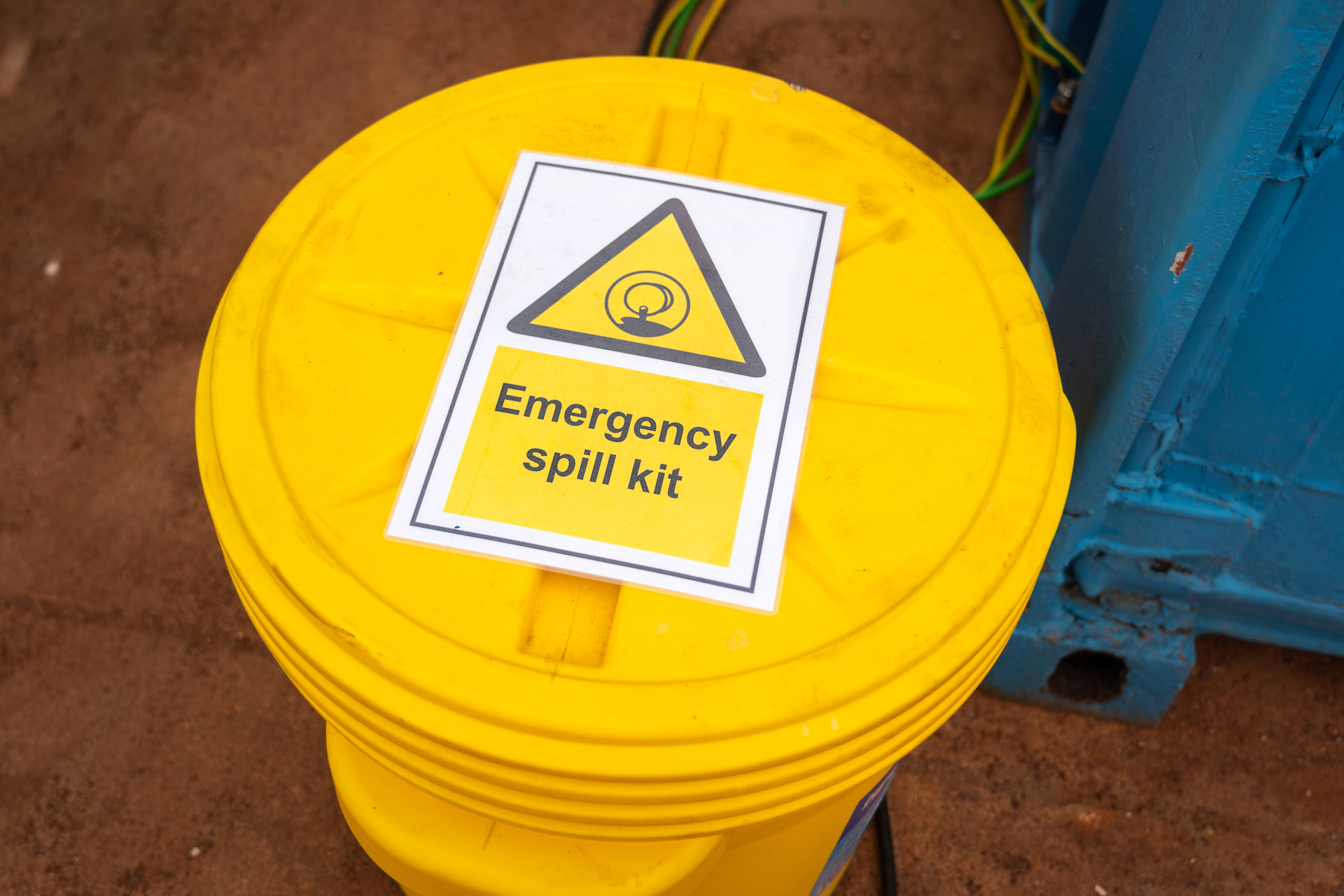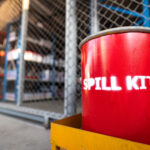
Effective spill containment and management is an important part of maintaining chemical compliance. While all precautions must be taken to ensure that chemical leaks or spill don’t occur, businesses must also be prepared to act quickly and decisively – if a spill does take place. In this blog, we’ll be listing the 6 essential steps you should take when selecting and maintaining a chemical spill kit for your DG handling or storage area. We’ll also be detailing how choosing the right spill kit can help your organization improve safety and meet compliance obligations.
Step 1: Know Your Obligations
In Dubai, workplaces that carry any type of dangerous goods are required to comply with ISO Regulations. The regulations state that containing and managing chemical spills is part of your legal obligation.
While adhering to the regulations may seem like a simple task, it’s often made more complicated when you’re dealing with hazardous chemicals and dangerous goods. As each type of chemical poses a unique risk to people, property and the surrounding environment, it’s important to develop a complete spill management approach that suits the type of dangerous goods that you’re carrying.
This is where the ISO Standards come in. While not technically law, the Standards provides a comprehensive guide for businesses who are carrying any class of dangerous goods. Each class of chemicals has its own Australian Standard, which explains all the detailed requirements for that dangerous goods class.
When determining your spill response requirements, it’s a good idea to refer to the relevant I.S.O Standard. If you choose not to refer to the Standard, and something goes wrong in your chemical handling or storage areas, you will have to prove in a court of law that the control measures you put in place were reasonable and suitable for the situation. However, as you can imagine, deviating from the Standard is not seen as best practice and can lead to chemical compliance complications.
Therefore, when you’re putting together a spill kit and chemical spill response, it’s a good idea to refer to the Australian Standards to ensure you’re creating a plan that is safe, legal and compliant.
Step 2: Consider The Chemical Classification
The second step in our guide to selecting and maintaining a spill kit is to consider the chemical class of the products that you’re carrying. Each chemical class will have a different set of risks, such as hazardous vapours, the potential for ignition or human harm. Therefore, you must identify the dangerous goods class of the chemicals that you’re using to find a suitable spill kit.
You must consider the type of chemical that you’re carrying in order to find a suitable chemical spill kit.
You must also make sure that your clean-up process does not create any additional hazards, such as spilled liquids reacting with or chemically attacking incompatible materials.
We recommend conducting an onsite risk assessment to determine the various dangerous goods classes of the chemicals that you’re carrying. Remember, within the class of chemicals there is also the chance that some substances may react with their own type, so the Safety Data Sheet of your products should be a key resource used in your assessment.
Once you have determined the type and class of the chemicals at your worksite, you can then consider the aggregate quantities that you’re carrying.
Step 3: What Quantities Are You Carrying?
What would happen if dangerous goods leaked or spilled into your workplace? Would it affect the immediate work area, equipment and vehicles? Or would the spill seep into offices, outdoor spaces and the natural environment?
When selecting a chemical spill kit for your work area, consider the quantity of dangerous goods that can leak or spill. You must also consider how hazardous substances could actually enter your workplace. For example, could staff spill chemicals when they’re pumping or decanting? Would staff be at risk when they’re filling up petrol or diesel tanks? Can a spill occur when chemicals are being transferred from your loading dock? Or could a chemical spill occur simply due to poor handling or storage procedures?
There are many ways in which chemicals can be spilled in a workplace. These may include:
- Human error (dropping a chemical drum)
- Insufficient maintenance of bunded shelving or storage (staff have failed to clean-out a spill containment bund, which then overflows)
- Issues with machinery (a leaking petrol tank)
- Faulty packaging (chemical packaging damaged during delivery or loading)
- Split containers (damaged chemical containers)
- Ill-fitting decanting and pumping equipment (equipment that’s not fit-for-purpose)
Once your business has determined the locations where a spill could occur, you can then determine the chemical capacity of the spill kits that you’ll require. You’ll have to look at the type of chemical that you’re looking to contain and clean-up (is it a highly viscous liquid?), the way the chemical will react during the spill (could it evaporate or solidify?), and the actual volume of chemicals that you’re holding (what is the total capacity of spilled liquids?).
Step 4: Selecting The Spill Kit
Now that you understand your spill management obligations — and you’re aware of the class and chemical quantities that you’re carrying — you can move forward and select the appropriate spill kit for each area of your operations.
Spill kits come in a range of types and capacities to suit all types of businesses and industries.
Chemical spill kits can include options for:
- Fuel and oil spill kits – these hydrocarbon spill kits are specifically made for flammable liquids such as fuel and oil
- Chemical spill kits – Hazchem spills require spill control kits which can clean-up a range of substances from paints to pesticides
- Universal spill kits – this type of spill kit is for non-aggressive chemical spills and other general clean-up applications
- Marine spill kit – chemical spills can happen anywhere – including on marine vessels. This type of kit is designed for petrol spills on the water
REMEMBER: The type of chemical spill kit that you choose must be suitable for the chemical product that you’re carrying. Therefore, a general purpose spill kit will not be recommended for highly volatile substances such as petrol or oil.
Each type of chemical spill kit will have a specific capacity. If the largest kit capacity exceeds your spill clean-up requirements, you will need to invest in multiple kits to tackle any workplace chemical spills.



